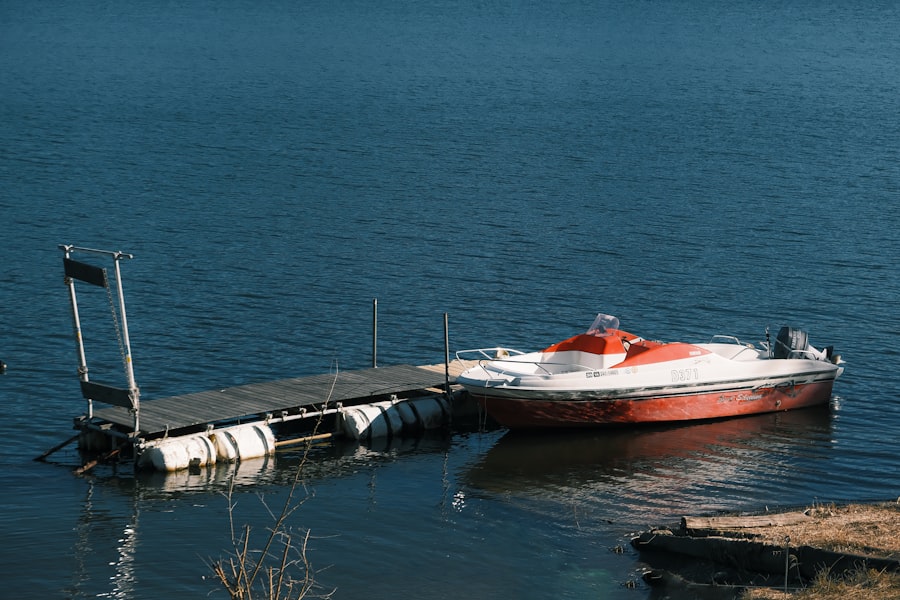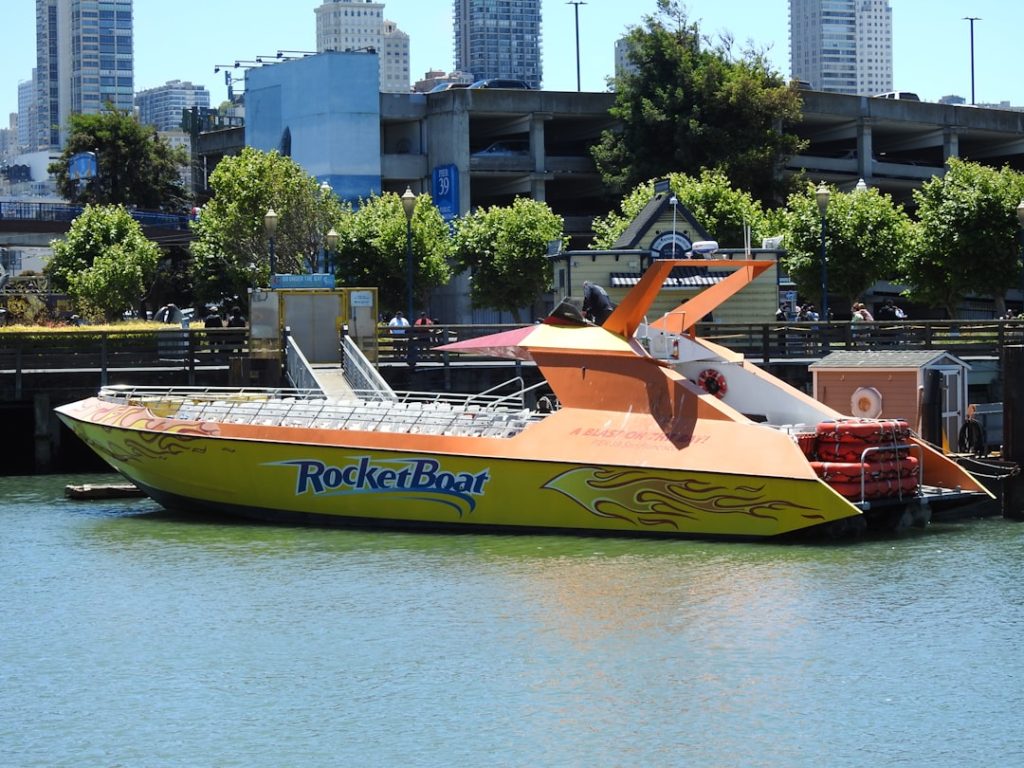Inflatable power boats have gained significant popularity among boating enthusiasts for a multitude of reasons. One of the most notable advantages is their portability. Unlike traditional hard-hulled boats, inflatable power boats can be deflated and packed away into a compact size, making them easy to transport in the trunk of a car or on a trailer.
This feature is particularly appealing for those who may not have the space to store a larger vessel or who frequently travel to different bodies of water. The lightweight nature of these boats also means that they can be launched and retrieved with minimal effort, allowing for spontaneous adventures on lakes, rivers, or coastal waters. Another significant advantage is their stability and buoyancy.
Modern inflatable power boats are designed with advanced materials and construction techniques that enhance their performance on the water. Many models feature multiple air chambers, which not only provide added safety in case of punctures but also contribute to a more stable ride. This stability is especially beneficial in choppy waters or when navigating through waves, making inflatable power boats suitable for both leisurely outings and more adventurous excursions.
Additionally, the soft sides of these boats reduce the risk of injury in case of collisions, making them a safer option for families and novice boaters.
Key Takeaways
- Inflatable power boats offer portability, ease of storage, and versatility on the water.
- Choosing the right inflatable power boat depends on size, material, engine compatibility, and intended use.
- Regular maintenance, including cleaning and checking for leaks, is essential to prolong boat life.
- Leading brands provide reliable options with varying features to suit different boating needs.
- Safety measures such as wearing life jackets and proper handling are crucial for safe boating experiences.
How to Choose the Right Inflatable Power Boat
Selecting the right inflatable power boat involves careful consideration of several factors tailored to individual needs and preferences. First and foremost, potential buyers should assess their intended use. Are they looking for a boat primarily for fishing, leisure cruising, or water sports?
Different activities may require specific features such as seating capacity, storage options, or engine compatibility. For instance, a boat designed for fishing might prioritize stability and storage for gear, while one intended for water sports may need to accommodate higher speeds and maneuverability. Another critical aspect to consider is the size of the inflatable power boat.
The dimensions will affect not only the boat’s performance but also its capacity to hold passengers and gear. Smaller models may be easier to handle and transport but could limit the number of people onboard. Conversely, larger boats offer more space but may require more powerful engines and additional maintenance.
Buyers should also take into account the weight capacity of the boat, ensuring it can safely accommodate all passengers and equipment without compromising performance.
Maintenance Tips for Inflatable Power Boats

Proper maintenance is essential for ensuring the longevity and performance of inflatable power boats. One of the most important aspects of maintenance is regular inspection for leaks or damage. Owners should routinely check seams, valves, and fabric surfaces for signs of wear or punctures.
If any issues are detected, they should be addressed immediately using appropriate repair kits designed specifically for inflatable boats. This proactive approach can prevent minor problems from escalating into major repairs that could compromise safety on the water. Cleaning is another vital component of maintaining an inflatable power boat.
After each use, especially in saltwater environments, it is crucial to rinse the boat thoroughly with fresh water to remove salt, sand, and debris that can degrade materials over time. Additionally, using mild soap and a soft brush can help keep the surfaces clean without causing damage. Once cleaned, the boat should be dried completely before being stored to prevent mold and mildew growth.
Regularly applying UV protectant sprays can also help preserve the integrity of the materials against sun exposure.
The Top Brands of Inflatable Power Boats
| Brand | Country | Years in Market | Popular Models | Max Capacity (persons) | Material | Price Range |
|---|---|---|---|---|---|---|
| Zodiac | France | 70+ | Pro, Medline, N-ZO | 4-12 | Hypalon, PVC | 3,000 – 20,000 |
| AB Inflatables | USA | 40+ | Jet, Oceanus, Sport | 4-10 | Hypalon, PVC | 5,000 – 25,000 |
| Brig | Australia | 30+ | Falcon, Eagle, Navigator | 4-12 | Hypalon, PVC | 6,000 – 30,000 |
| Highfield | Australia | 25+ | Classic, Ocean Master, Patrol | 4-12 | Aluminum hull with Hypalon tubes | 7,000 – 35,000 |
| Walker Bay | USA | 50+ | Generation, Sport, Wave | 3-8 | Hypalon, PVC | 3,500 – 15,000 |
When it comes to inflatable power boats, several brands stand out due to their reputation for quality, innovation, and customer satisfaction. One such brand is Zodiac, which has been a leader in the inflatable boat market for decades. Known for their durable construction and advanced design features, Zodiac boats are often favored by both recreational users and professionals alike.
Their models range from small tenders to larger RIBs (Rigid Inflatable Boats), catering to various needs and preferences. Another prominent brand is Achilles, recognized for its commitment to producing high-quality inflatable boats that emphasize safety and performance. Achilles boats are constructed using high-quality materials that enhance durability while maintaining lightweight characteristics.
Their attention to detail in design ensures that users experience comfort and stability on the water. Additionally, brands like Sea Eagle and Intex have made significant strides in the market by offering affordable yet reliable options that appeal to casual boaters and families looking for fun on the water without breaking the bank.
Where to Find Inflatable Power Boats for Sale
Finding inflatable power boats for sale can be accomplished through various channels, each offering unique advantages. One of the most straightforward methods is visiting local marine dealerships that specialize in boating equipment. These dealerships often carry a range of brands and models, allowing potential buyers to see the boats in person and ask questions about features and specifications.
Additionally, many dealerships provide financing options and warranties that can enhance the purchasing experience. Online marketplaces have also become increasingly popular for buying inflatable power boats. Websites such as eBay, Craigslist, and specialized boating forums allow users to browse a wide selection of new and used boats from private sellers and dealers alike.
This option provides the convenience of comparing prices and features from the comfort of home. However, buyers should exercise caution when purchasing online by verifying seller credentials and arranging for inspections before finalizing any transactions.
The Different Types of Inflatable Power Boats

Inflatable power boats come in various types, each designed to cater to specific activities and preferences. One common type is the inflatable dinghy, which is typically smaller and used as a tender for larger vessels or for short trips on calm waters. These boats are lightweight and easy to maneuver, making them ideal for fishing or leisurely outings on lakes.
Another popular category is Rigid Inflatable Boats (RIBs), which combine inflatable tubes with a solid hull structure. RIBs are known for their stability and performance in rough waters, making them suitable for rescue operations, commercial use, or recreational activities like water skiing and diving. Their robust design allows them to handle higher speeds while providing a comfortable ride even in challenging conditions.
Safety Considerations for Inflatable Power Boats
Safety should always be a top priority when operating inflatable power boats. One essential consideration is ensuring that all passengers wear life jackets at all times while on board. Life jackets should be appropriately sized for each individual and comply with local regulations regarding flotation devices.
Additionally, it is crucial to equip the boat with necessary safety gear such as flares, a first aid kit, fire extinguishers, and a whistle or horn for signaling. Another important safety measure involves understanding local boating regulations and weather conditions before heading out on the water. Boaters should familiarize themselves with navigation rules, speed limits, and designated areas for specific activities like fishing or water sports.
Monitoring weather forecasts can help avoid dangerous situations caused by sudden storms or high winds that could impact the safety of an inflatable power boat.
The Future of Inflatable Power Boats
The future of inflatable power boats appears promising as advancements in technology continue to enhance their design and functionality. Innovations in materials science have led to lighter yet more durable fabrics that resist punctures and UV damage while maintaining buoyancy. These improvements not only extend the lifespan of inflatable boats but also enhance their performance on the water.
Moreover, as environmental concerns grow, manufacturers are increasingly focusing on eco-friendly practices in production processes. This shift includes using sustainable materials and reducing waste during manufacturing. Additionally, electric propulsion systems are gaining traction within the boating community as they offer quieter operation with reduced emissions compared to traditional gas engines.
As these trends continue to evolve, inflatable power boats are likely to become even more versatile and appealing to a broader audience seeking adventure on the water while prioritizing sustainability.


